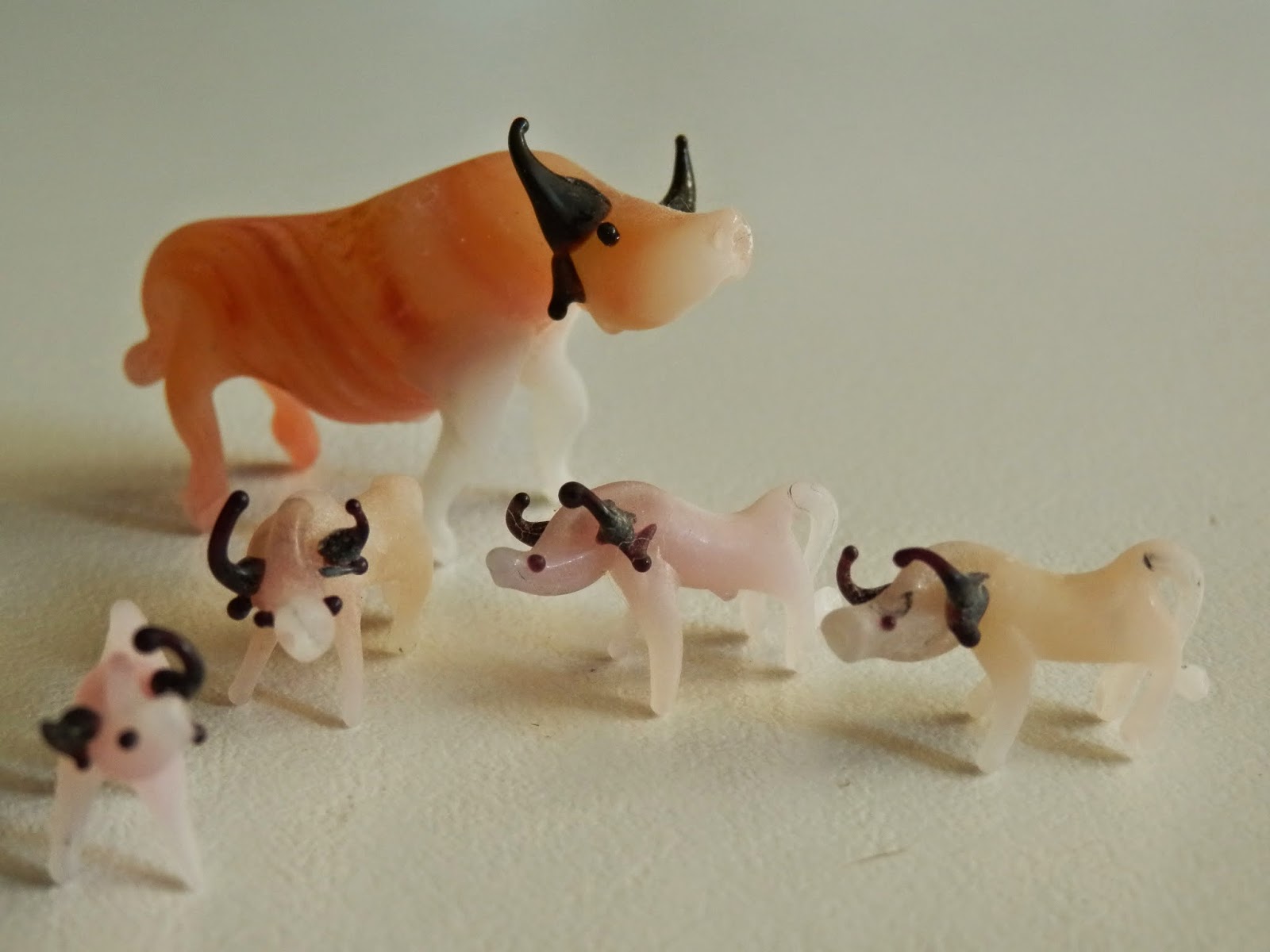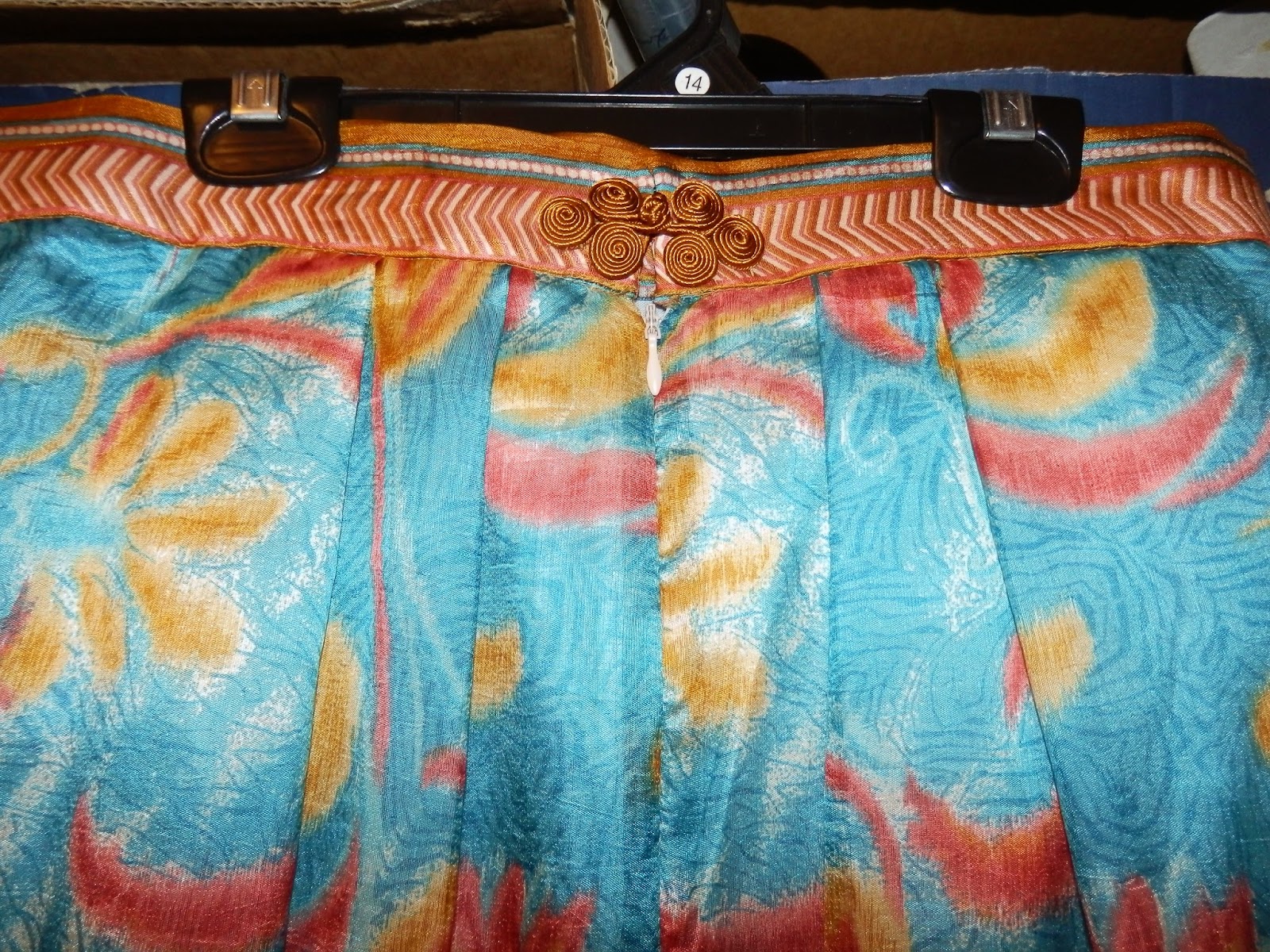In my grandfather's wardrobe sat five little boxes. each one no bigger than a ring box, but made from stiff brown cardboard.
They'd been kept safe, in amongst the handkerchiefs and silk ties and yet upon opening them, they seems so out of place, and consequently so much more elusive.
Each one had a single word scrawled upon the lid. A French word, some instantly recognisable, others less so, until I saw the contents. Then they too made sense, the French word for the type of animal within.
For within each box was a miniature animal accompanied by 4 smaller ones made in pastel shades of a frosted glass.

Where were they from?
The style did not look to be at all Australian, but more reminiscent of the colours and textures I associated with Egypt. And the animals had Egyptian associations too. But that was just my educated guess. I had no affirmation that this was their true origin.
And if they were from Egypt, then which era? My Great Grandmother's, my Grandfather's or far more recently when Granddad had revisited Alexandria and expressed his disappointment at the extreme change since his day?
Who's were they?
They were not stored with my Grandmother's possessions, in amongst her remaining hats and gloves, or secreted away in the glory box with other possessions of sentiment or value.
Were they my Grandfather's mother's? A sentimental reminder of her husband, or of life in Egypt? But if so, why were they stored in such an intimate and unusual location?
What is their connection?
Were they kept separately because they had sentimental value for my grandfather?
A memory from his childhood home, of his father, his mother, an event?
Were they the first present he gave my grandmother back in the early days of their courtship and he kept them because she'd kept them?
Were they a present he never gave her? Never gave someone(s)?
What ever their providence, their history, their connection, their meaning, this minute menagerie is sweet, delicate and so well preserved given their fragility.
They are unlike anything I expected to find, and anything I've seen on my own travels, as though bigger is now better and these are just 'quaint', a term that seems to have not all too positive associations with a bygone era.
They'd been kept safe, in amongst the handkerchiefs and silk ties and yet upon opening them, they seems so out of place, and consequently so much more elusive.
Each one had a single word scrawled upon the lid. A French word, some instantly recognisable, others less so, until I saw the contents. Then they too made sense, the French word for the type of animal within.
For within each box was a miniature animal accompanied by 4 smaller ones made in pastel shades of a frosted glass.

Where were they from?
The style did not look to be at all Australian, but more reminiscent of the colours and textures I associated with Egypt. And the animals had Egyptian associations too. But that was just my educated guess. I had no affirmation that this was their true origin.
And if they were from Egypt, then which era? My Great Grandmother's, my Grandfather's or far more recently when Granddad had revisited Alexandria and expressed his disappointment at the extreme change since his day?
Who's were they?
They were not stored with my Grandmother's possessions, in amongst her remaining hats and gloves, or secreted away in the glory box with other possessions of sentiment or value.
Were they my Grandfather's mother's? A sentimental reminder of her husband, or of life in Egypt? But if so, why were they stored in such an intimate and unusual location?
What is their connection?
Were they kept separately because they had sentimental value for my grandfather?
A memory from his childhood home, of his father, his mother, an event?
Were they a present he never gave her? Never gave someone(s)?
What ever their providence, their history, their connection, their meaning, this minute menagerie is sweet, delicate and so well preserved given their fragility.
They are unlike anything I expected to find, and anything I've seen on my own travels, as though bigger is now better and these are just 'quaint', a term that seems to have not all too positive associations with a bygone era.


































































































